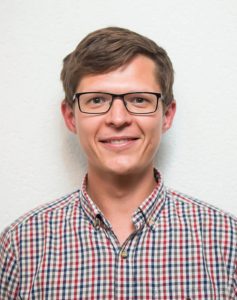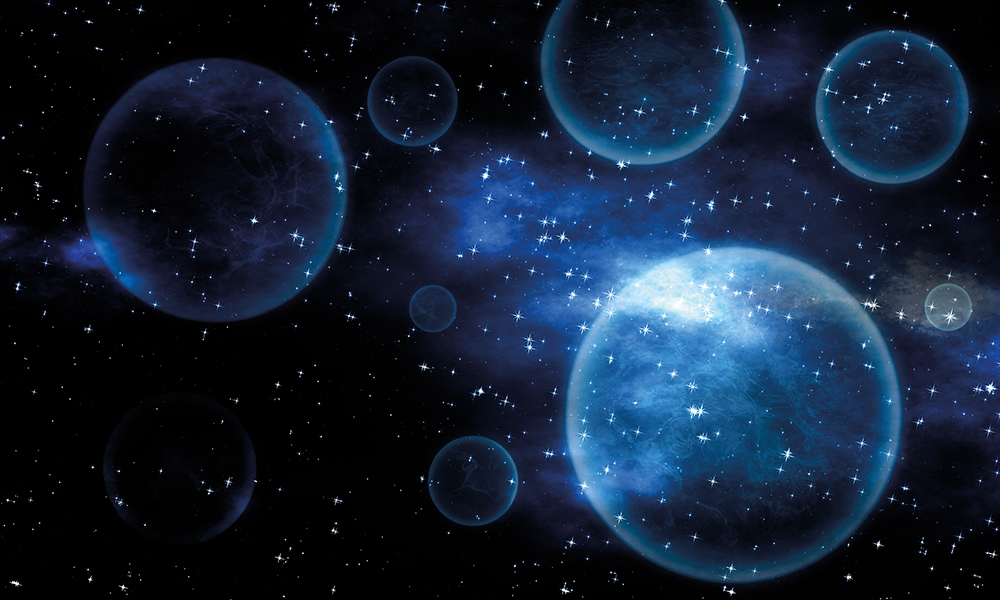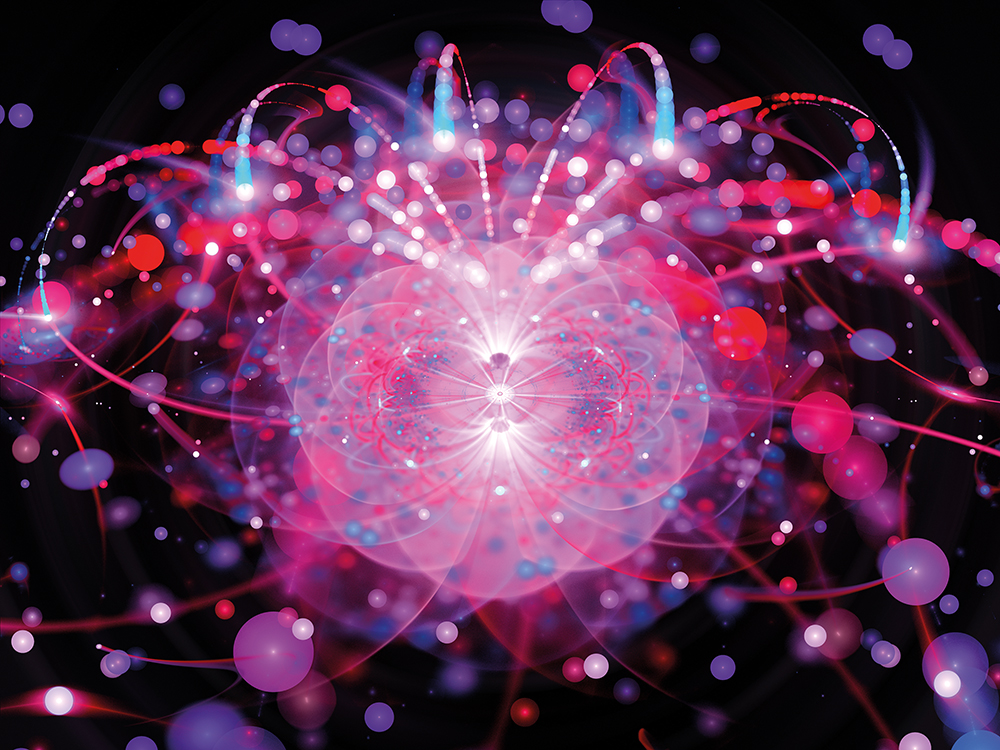CERN’s Future Circular Collider
 Geneva-based particle physics research centre, CERN, plans to build a £20bn particle accelerator that is almost four times longer than today’s largest and most powerful accelerator, the Large Hadron Collider (LHC). At 100 kilometres long, this ‘Future Circular Collider’ (FCC) will be able to accelerate particles to unprecedented speeds, leading to collisions that are 10 times more energetic than those achieved on the LHC. Measurements taken from such collisions will help scientists in solving several longstanding mysteries in physics, such as the nature of dark matter. In this exclusive interview, we speak with CERN physicist Dr Matthew McCullough, who tells us about CERN’s plans for the FCC, its remarkable capabilities, and the new physics that he is most excited to explore.
Geneva-based particle physics research centre, CERN, plans to build a £20bn particle accelerator that is almost four times longer than today’s largest and most powerful accelerator, the Large Hadron Collider (LHC). At 100 kilometres long, this ‘Future Circular Collider’ (FCC) will be able to accelerate particles to unprecedented speeds, leading to collisions that are 10 times more energetic than those achieved on the LHC. Measurements taken from such collisions will help scientists in solving several longstanding mysteries in physics, such as the nature of dark matter. In this exclusive interview, we speak with CERN physicist Dr Matthew McCullough, who tells us about CERN’s plans for the FCC, its remarkable capabilities, and the new physics that he is most excited to explore.
How was the idea to build the FCC first conceived?
After the discovery of the Higgs boson, it became clear to the global particle physics community that a high precision Higgs factory, such as FCC-ee (an electron–positron collider), was the obvious next step if we want to understand this curious and singular particle, and a number of different communities began seriously considering this possibility.
A Higgs factory alone is not sufficient to address the full breadth of questions we have in fundamental particle physics, so an energy frontier machine that offers broad exploration capabilities but, importantly, can also be hosted within the same infrastructure as a precision Higgs factory, such as FCC-hh (a proton–proton collider), quickly followed suit.

The FCC will be a whopping 100 km long – dwarfing the 27 km LHC – making it the most powerful particle accelerator in the world by far. How will the FCC’s capabilities compare with those of the LHC?
The capabilities will far surpass those of the LHC, both in terms of precision and in terms of the reach to explore what exists at more microscopic distances.
For the former, let’s take the Higgs boson as an example. To understand this new type of particle, it is crucial that we measure its interactions as precisely as possible. At the LHC, the best precision we can hope for is at the level of a few percent, whereas the FCC can push the precision frontier to far below the percent level, giving us unprecedented access to the world of the Higgs boson.
For the latter, the extremely high energy of FCC-hh allows us to reach the actual particles responsible for forces that are much more microscopic than the distance scales probed by the LHC. The improvement depends on the scenario, but typically one can directly probe distance scales a factor of five smaller.
Because the FCC will be able to accelerate particles to even higher speeds, leading to higher-energy collisions, do you need to design a new class of detectors to capture previously-unattainable signals that might be created in such collisions?
Absolutely. The detectors will build on the technological advances made already at the LHC, but further innovation will be required. This is at the level of the technological hardware – for example, in designing detectors with higher resolution to track particles with greater precision.
A second aspect is the big data challenge of the FCC. The FCC-hh detectors in particular would produce enormous quantities of data to be stored, shared, and analysed. This would raise computational and big data challenges greater than we have seen before in particle physics.
However, when faced with such obstacles in the past, researchers at CERN and within the broader particle physics community have risen to the challenge. This is, after all, how we ended up with the World Wide Web.
‘The thing that excites me the most is actually very simple: it is the sheer excitement of exploring places no one has ever been before. In this case, the ‘places’ are the microscopic innards of nature which can only be explored with the FCC.’

When do you hope construction will begin and end? What challenges do you foresee cropping up during this phase?
As a theoretical physicist I am totally unqualified to comment on construction challenges. But also, as a theorist with a long list of questions about the laws of nature to be answered, I can tell you that I hope construction begins and ends as soon as possible so that I can benefit from the knowledge the FCC will create.
I’m particularly interested in how the FCC will be able to probe the nature of dark matter. How could collisions between normal matter particles provide information about dark matter?
Despite the fact that there is a lot more dark matter than visible matter in the Universe, we have absolutely no idea what it is. This makes the dark matter puzzle one of the most acute problems in modern physics.
In fact, we know so little about it, that the particles that make it up could still, in principle, take an enormous range of masses. Each mass range requires a dedicated experimental program to discover it. It turns out that one well-motivated mass range is around the energies available to high energy colliders such as FCC. The reason I say it is ‘well-motivated’ is because for this mass range if you have moderately-sized interactions between the dark matter and the standard model particles and you run the cosmological clock forward from early times, you typically predict the same amount of dark matter as we know exists today.
It’s sort of a Goldilocks situation, where the theory and cosmology work out to get the prediction ‘just right’. Because their mass is within range, these particles could be produced in colliders, but, being dark, we couldn’t actually detect them. However, just as with Goldilocks, some tell-tale traces of the dark matter would be left over.
For instance, we know that momentum is conserved in nature, and if dark matter is produced, it will carry away momentum that we don’t measure in the detector. Thus, we would add everything up and the sums wouldn’t match because of ‘missing momentum’. Now, this is only one of the tell-tale signatures of dark matter production, but putting the full suite of possibilities together, it turns out that the FCC can probe the vast majority of models of this type through such signatures.
How might the FCC be used to figure out why the universe appears to contain hardly any antimatter, compared to matter?
If you take the Standard Model of particle physics and again run forward the cosmological clock from the early Universe to now, you don’t end up with enough matter, certainly far less than we observe. Thus, there must be something beyond the Standard Model that explains where it came from.
There are many different possibilities for how this could have happened. There is one class of theories in particular where this occurred during the transition when the Higgs field gave mass to many of the particles we know. We call this the electroweak phase transition. Modifying the dynamics of the Higgs field at this time requires modified interactions and/or new particles in the Higgs sector. It turns out that, since the FCC is uniquely effective at exploring the Higgs boson, these modifications are typically big enough to be seen at the FCC. As a result, if the matter was created during the electroweak phase transition, there’s a good chance we could see the new physics responsible for it with FCC.

In terms of new physics, what possibilities are you most excited about?
The thing that excites me the most is actually very simple: it is the sheer excitement of exploring places no one has ever been before. In this case, the ‘places’ are the microscopic innards of nature which can only be explored with the FCC.
If forced to be more specific, there is one measurement that I think is extremely important. This whole story of the Higgs field obtaining a non-zero value everywhere and giving mass to particles has its deep origin in the potential energy contained in the Higgs field. To measure the shape of the ‘Higgs potential’, it turns out that we have to measure how it interacts with itself. This is predicted in the Standard Model, but it is by no means guaranteed that the Standard Model is the appropriate description in this mysterious corner of Higgs physics.
Thus, for me, this is one of the most important questions we have, central to the questions surrounding the Higgs boson and the origin of fundamental particle masses. At the LHC we can’t measure the Higgs self-interactions well at all, so after the collider has finished running, we will have a very poor understanding of this core structural aspect. On the other hand, the FCC can measure this hidden corner of the Standard Model to a precision of a few percent, providing a clear window into the Higgs potential.
Finally, when the LHC was being developed, there were some concerns about existential dangers associated with conducting such high-energy experiments. Many worried about black holes being generated on Earth, and other doomsday scenarios. Are there any genuine concerns this time around?
These days we certainly do have reasons to be concerned for the future of our planet, but the FCC isn’t one of them!
https://home.cern/science/accelerators/future-circular-collider
Reference
https://doi.org/10.33548/SCIENTIA391
Creative Commons Licence
(CC BY 4.0)
This work is licensed under a Creative Commons Attribution 4.0 International License. 
What does this mean?
Share: You can copy and redistribute the material in any medium or format
Adapt: You can change, and build upon the material for any purpose, even commercially.
Credit: You must give appropriate credit, provide a link to the license, and indicate if changes were made.
More articles you may like
Grandmothers: Innovation Through Tradition
Grandmother Project – Change through Culture (GMP) is an organisation dedicated to documenting the role of grandmothers and demonstrating the effectiveness of grandmother-inclusive strategies in improving the health and well-being of women, children, and adolescents. GMP’s groundbreaking work challenges conventional wisdom to transform community-based interventions in Africa and beyond, harnessing a powerful but often overlooked resource: the wisdom and influence of grandmothers.
Dr Robert Larkin | Cultivating Change to Improve Soil Health and Increase Potato Yield
Environmental quality and food production are facing the pressing challenges of climate change and global population growth. Dr Robert Larkin from the United States Department of Agriculture-Agricultural Research Service (USDA-ARS) and a team of plant scientists developed and tested a range of crop management systems to help overcome these compounding challenges. Their work is improving soil health and increasing the yield of potato crops, contributing to the future food security of nations.
Professor Giorgio Buttazzo | Artificial Intelligence and a Crossroads for Humanity
Where do we stand with artificial intelligence? Might machines take over our jobs? Can machines become conscious? Might we be harmed by robots? What is the future of humanity? Professor Giorgio Buttazzo of Scuola Superiore Sant’Anna is an expert in artificial intelligence and neural networks. In a recent publication, he provides considered insights into some of the most pressing questions surrounding artificial intelligence and humanity.
Dr Ralf Adam | New Technologies Shaping the Future of Oral Hygiene
Understanding the efficiency of various toothbrush technologies is essential for achieving optimal oral health. Dr Ralf Adam, who leads a dedicated team at Procter & Gamble in Germany, is keen to investigate the complexities of these technologies. His team have provided new insights into the best toothbrush types for plaque removal and the maintenance of gum health. By highlighting the importance of informed oral care decisions and ongoing investigations, this vital research works towards ensuring everyone can achieve a brighter, healthier smile.




